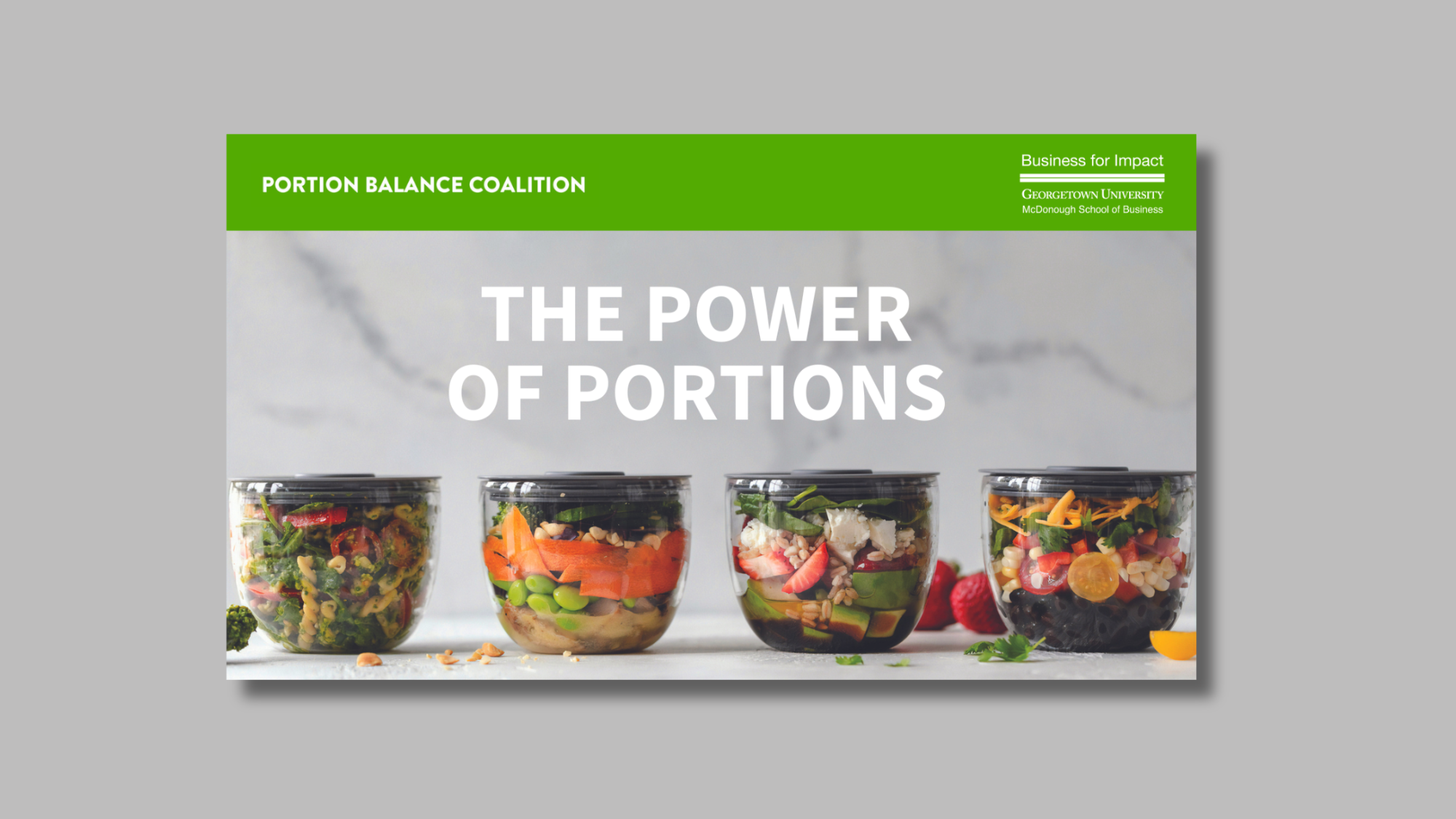New Georgetown Study Reveals Impact of Food Portions on Health and the Environment
“Power of Portions” report indicates over 50% of consumers want smaller portions
The inaugural “Power of Portions” report released by the Portion Balance Coalition (PBC) at Georgetown University’s McDonough School of Business reveals a correlation between portion sizes, food consumption, and obesity rates and their impact on health and sustainability goals across the United States, with actionable steps for more effective portion management strategies.
As obesity rates and related health challenges reach new levels of concern – which are further compounded by the scrutiny of the food system’s impact on the planet and global sustainability goals – the “Power of Portions” report provides a “state of the union” level assessment of portion sizes through an analysis of consumer behaviors, corporate and government-level strategies to promote a healthier society, and efforts towards reducing the industry’s carbon footprint.
The Portion Balance Coalition fielded a landmark study in collaboration with the Natural Marketing Institute to over 1,000 respondents to determine their attitudes and purchase behaviors regarding portions across five distinct health and wellness consumer segments, including topics such as nutrition labeling, purchase and usage decisions, and the strategies they use to manage their portions and practice mindful eating habits. The report also highlights case studies from specific company initiatives focused on reducing portions and calories as part of broader sustainability efforts.
“When we view portion efforts through a holistic lens, we give consumers the tools they need to make informed decisions about food and wellness while supporting broader corporate goals to reduce food waste and lower costs,” said Hank Cardello, chair of the Portion Balance Coalition at Georgetown McDonough’s Business for Impact. “The ‘Power of Portions’ report intends to shine a light on portion management as the best strategy to help reduce obesity rates and promote healthier lifestyles.”
A seminal 2014 report from the McKinsey Global Institute identified portion control as the key intervention for preventing long-term health disabilities and promoting a healthier life. Building on this foundational study, the Portion Balance Coalition’s “Power of Portions” report provides a comprehensive analysis of the state of portions, which includes data on consumer dietary behaviors and the obesity crisis, how food-related industries and companies are responding to portion balance, global sustainability pressures, and the challenges of influencing consumer behavior across segments.
The Portion Balance Coalition’s “Power of Portions” report reveals there has been some progress in portion control initiatives, including several food industry coalitions and consumer packaged goods companies that have developed strategies to eliminate calories from the food supply and lower their portion sizes. Notably, the consumer survey indicates that 51% of consumers practice some form of portion management and desire smaller portion sizes. However, there is significant progress still to be made to address over-consumption across consumer segments, with only two out of the five segments indicating their likelihood to adopt smaller portion sizes.
Other key findings:
- Portions now influence food preparation decisions more than added sugars, sodium, and saturated fats. Portions are now the primary source of consideration by consumers and corporations for impacting health outcomes.
- Consumer segments with higher BMIs read package nutrition information the least. Label reading declines sharply for the audience segments that exhibit the highest rates of obesity.
- Two consumer segments – “Well Beings” and “Fence Sitters” – are the most engaged with portions. These two segments, which make up 50% of the U.S. population, are more likely to adopt smaller portion sizes.
- The restaurant and food service sector holds a greater proportion of oversized portions. The perceived value of larger portions has driven restaurants and food chains to increase their portions over the years, exacerbating overeating and calorie consumption.
- Different messaging strategies are required to motivate each consumer segment. Each of the five segments approaches food and portions differently and will require tailored messages to influence the adoption of smaller portions.
“Through an in-depth evaluation of the current state of portion control across the industry, this report provides the public health community, policymakers, food industry executives, and consumers with tools to implement systemic changes to reduce portion sizes and help consumers lead healthier lives,” said Laura Ferry, senior director of the PBC and director of ESG initiatives at Business for Impact. “We are grateful to our sponsors and collaborators for making this milestone study possible as we leverage these insights to promote better dietary habits and health outcomes for all.”
The inaugural “Power of Portions” report is the result of a collaborative effort from the sponsors, including the American Beverage Association, American Frozen Food Institute, General Mills, Mondelēz International, National Confectioners Association, and The Kraft Heinz Company.
For a deeper analysis of the state of portion balance and recommendations for the future of the food industry, read the full report.
